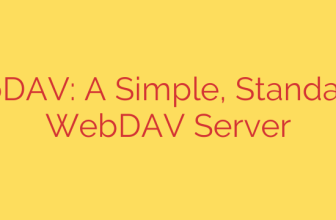
A CISO’s Guide: How to Present on AI to the Board of Directors
The age of artificial intelligence is no longer on the horizon; it’s a present-day reality shaping industries and business strategies. Your board of directors is reading the headlines, hearing the buzz, and asking the critical question: “What is our AI strategy, and is it secure?” As a Chief Information Security Officer (CISO), your ability to answer this question clearly and strategically is paramount.
This is more than a technical briefing; it’s a conversation about risk, opportunity, and governance. Effectively communicating the complexities of AI to a non-technical, business-focused audience requires a thoughtful approach. This guide provides a strategic framework for CISOs to deliver a powerful, informative, and compelling presentation on AI to the board.
Frame AI as a Business Imperative, Not Just a Tech Trend
Before diving into the details, it’s crucial to set the right tone. Your presentation should position AI as a fundamental business issue that impacts everything from operational efficiency to market competition and brand reputation. Avoid getting lost in technical jargon. Instead, focus on translating AI concepts into business outcomes. The board needs to understand that a proactive AI security and governance strategy is not a cost center—it’s an enabler of safe, sustainable innovation.
Your Strategic Framework for an AI Board Presentation
A well-structured narrative is key to a successful board presentation. Organize your discussion around the core pillars of business strategy: understanding the technology, evaluating its impact, assessing the current state, and defining the path forward.
1. Demystify AI: The ‘What’ and ‘Why It Matters’
Start with a simple, high-level explanation of AI, particularly generative AI, and its relevance to your company and industry.
- Use plain, business-centric language. Avoid technical terms like “large language models” or “neural networks.” Instead, use analogies they can understand. For example, describe generative AI as a “highly advanced intern capable of summarizing vast amounts of information, drafting communications, or analyzing data patterns.”
- Connect to strategic impact. Explain how AI can drive revenue, improve customer experience, or create operational efficiencies. The goal is to make the technology tangible and directly relevant to the company’s bottom line. Focus on how AI can either accelerate your existing business strategy or create entirely new opportunities.
2. The Twin Engines: Opportunities and Risks
A balanced perspective is essential for building credibility. Acknowledge the immense potential of AI while being transparent about the significant risks.
- Highlight the Opportunities: Briefly outline the potential upsides. This could include enhanced threat detection, automated security responses, streamlined compliance processes, and product innovation. Showing that you understand the business benefits demonstrates strategic alignment.
- Detail the Security Risks: This is your core area of expertise. Clearly articulate the new threat landscape created by AI. Key risks include:
- Data Privacy and Confidentiality: Employees pasting sensitive corporate data into public AI tools.
- Data Poisoning: Attackers corrupting the data used to train AI models, leading to flawed or malicious outputs.
- Prompt Injection and Model Theft: Malicious actors manipulating AI prompts to bypass security controls or steal the proprietary model itself.
- Ethical and Reputational Risks: AI models producing biased, inaccurate, or harmful content that could damage the company’s brand.
- A “Regulatory Minefield”: The evolving landscape of AI-related laws and compliance requirements that carry significant legal and financial risk.
3. The Current Landscape: Our AI Footprint
The board needs to know where the organization stands today. A transparent assessment of current AI usage is critical for establishing a baseline and demonstrating a grasp of the situation.
- Address Official and “Shadow” AI: Discuss sanctioned AI projects and tools that are officially deployed. More importantly, address the reality of “shadow AI”—the unsanctioned use of public AI tools by employees. This shows you are aware of the hidden risks.
- Present a Transparent Inventory: If possible, provide a high-level overview of which departments are using which tools and for what purposes. This grounds the conversation in reality and highlights the urgent need for a unified governance policy.
4. The Path Forward: Governance and Strategy
This is the most important part of your presentation. After outlining the landscape, you must present a clear, actionable plan for managing AI securely and responsibly.
- Propose a Governance Structure: Recommend the formation of an AI governance committee or council comprised of leaders from legal, IT, security, HR, and key business units. This body would be responsible for setting policy and overseeing AI implementation.
- Establish Clear Policies: Outline the need for an Acceptable Use Policy (AUP) for AI. This policy should define what tools are permitted, what data can be used, and the responsibilities of employees. The goal is to create guardrails, not roadblocks, for innovation.
- Develop a Strategic Roadmap: Present a phased plan that includes employee training, implementing security controls for AI systems, and establishing a process for vetting and approving new AI tools.
5. The Ask: What We Need for Success
Every effective board presentation concludes with a clear call to action. You have educated the board and presented a plan; now, you must state what you need from them to execute it.
- Be Specific and Justified: Your request should be directly tied to the strategy you’ve just outlined. This could be funding for new security technologies, headcount for an AI governance role, or, most importantly, board-level endorsement and support for the proposed governance framework.
- Frame it as an Investment: Position your request not as a cost, but as a necessary investment to mitigate significant risk and unlock the full business potential of AI in a secure manner.
By framing the conversation around business strategy, risk management, and responsible governance, CISOs can move beyond being technical experts and become indispensable strategic partners. This approach ensures the board is not just informed but also empowered to make the right decisions in the rapidly evolving age of AI.
Source: https://www.bleepingcomputer.com/news/security/presenting-ai-to-the-board-as-a-ciso-heres-a-template/







